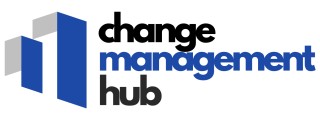-large-teaser.webp)
Understanding the Role of a Project Management Plan
Defining the Purpose of a Project Management Plan
A project management plan is not just a document; it's a strategic tool that guides the entire lifecycle of a project. It serves as a roadmap for the project team, outlining the project scope, objectives, and the steps necessary to achieve them. This plan is essential for aligning the team’s efforts with the project’s goals, ensuring that everyone is on the same page.
Establishing a Clear Project Scope
One of the primary roles of a project management plan is to define the project scope. This involves detailing what the project will deliver and the boundaries within which the team will work. A clear scope helps prevent scope creep, which can derail a project if not managed properly. By setting clear boundaries, the project manager can ensure that the team remains focused on the core objectives.
Facilitating Communication and Collaboration
Effective communication is at the heart of successful project management. A well-crafted plan acts as a communication tool, ensuring that all stakeholders are informed about the project’s progress and any changes that may occur. This is crucial for maintaining transparency and fostering collaboration among team members.
Risk Management and Quality Assurance
Identifying potential risks and establishing mitigation strategies is another critical function of a project management plan. By anticipating challenges, the project manager can develop contingency plans to address them, minimizing their impact on the project. Additionally, the plan should include quality assurance processes to ensure that the project deliverables meet the required standards.
Scheduling and Resource Allocation
A project management plan also includes a detailed schedule that outlines the timeline for each phase of the project. This helps in managing time effectively and ensures that the project stays on track. Resource allocation is another key component, ensuring that the project team has the necessary tools and resources to complete their tasks efficiently.
For more insights on achieving effective work goals when changing processes, you can explore this resource.
Key Components of a Project Management Plan
Essential Elements to Include
A robust project management plan serves as the cornerstone for guiding your project to successful completion. Creating this plan requires attention to key components that ensure both quality and clarity in execution. Here's what to focus on when crafting your plan:
- Project Scope: Clearly delineating the project scope is crucial. It establishes boundaries and helps the project team understand what will be delivered, preventing scope creep and minimizing risks.
- Objectives and Deliverables: Define specific, measurable objectives and the key deliverables that will result from the project. This step aligns team efforts and provides a clear path for meeting project goals.
- Work Breakdown Structure (WBS): A WBS allows the team to break down tasks into manageable sections, facilitating better team collaboration and easier task management.
- Resource Allocation: Detailing resource needs and assigning responsibilities ensures all parts of the project are adequately staffed and equipped, helping mitigate potential resource bottlenecks.
- Risk Management: Identifying potential risks and planning mitigation strategies offers a proactive approach to addressing issues before they escalate.
- Schedule and Timelines: Clearly defined schedules, complete with milestones and deadlines, help keep the project on track and facilitate timely delivery.
- Communication Plan: Establishing a solid communication plan supports smooth information flow, enhancing project coordination within the team and with stakeholders.
- Quality Management: Developing a plan for maintaining and assessing quality ensures that the final deliverables meet pre-determined standards and requirements.
Utilizing a Plan Template
Employing a plan template can significantly enhance the project planning process, providing a structured format that guides project managers in documenting each component effectively. It supplements project managers with a framework to ensure all essential elements are covered, reducing the likelihood of critical omissions, and fostering consistent and comprehensive project documentation.
Being well-versed in these components will not only aid in creating an effective manager plan but will also improve project outcomes through superior planning and organization. This strategic approach sets the foundation for addressing changes dynamically and easing the management of a project through its various phases.
Strategies for Effective Change Management
Embracing Change: A Step-by-Step Guide
In any project journey, change is inevitable. The ability to manage it effectively can spell the difference between success and setbacks. A robust project management plan lays the groundwork for managing this evolution smoothly. Here’s a closer look at strategies to strengthen your project’s adaptability by integrating effective change management strategies.
First and foremost, understanding the scope of change is crucial. Evaluating the potential impacts on your project, whether they involve alterations in timeline, resources, or project goals, sets the stage for smoother adaptation. Highlighting a clear project scope and outlining flexible response mechanisms within your project plan template ensures that your team is prepared and aligns with the changing landscape.
Strategies to Foster Change Readiness
- Stakeholder Engagement: Ensuring all members of the project team are on board with the change process helps prevent resistance. Regular communication and involvement in decision-making reinforce a shared commitment to the project goals.
- Clear Communication: Transparent and regular updates maintain clarity. Utilize an effective schedule within your management plan to categorize updates effectively, whether regarding the project scope, timelines, or task obligations.
- Flexible Planning: Embedding adaptability within the project planning phase allows for realignment without much hassle. Keep your plan template and processes logical yet accommodating.
Leadership in Managing Change
Strong leadership is a vital component in successfully navigating change. While project managers guide on structural adjustments, empowering team members to contribute ideas fosters a culture open to evolving methodologies. To support these changes, a risk management strategy can identify potential pitfalls before they escalate.
These frameworks not only prepare your team but also align cross-functional objectives to the change at hand. By addressing potential bottlenecks early on and maintaining an adaptive mindset, your projects are well-poised to achieve their desired outcomes despite the dynamic environment.
Common Challenges in Change Management
Identifying and Overcoming Barriers
Change management is a crucial part of any project management plan, but it often comes with its own set of challenges. Understanding these challenges is essential for project managers to navigate the complexities of change effectively. Here are some common obstacles you might face:
- Resistance to Change: Team members or stakeholders may resist changes due to fear of the unknown or comfort with the current processes. It's vital to communicate the benefits and necessity of the change clearly.
- Lack of Communication: Inadequate communication can lead to misunderstandings and confusion about the change process. Establishing a clear communication plan within your management plan is essential to keep everyone informed and engaged.
- Insufficient Resources: Sometimes, the resources required to implement change are underestimated. This includes time, budget, and personnel. Ensure your project plan accounts for these needs to avoid disruptions.
- Unclear Objectives: Without a well-defined project scope and objectives, the change process can become aimless. A detailed project plan template can help outline these objectives clearly.
- Inadequate Training: Change often requires new skills or knowledge. Providing adequate training and support is crucial to ensure your team can adapt to new processes or technologies.
Strategies to Mitigate Risks
To address these challenges, project managers can employ several strategies:
- Engage Stakeholders Early: Involve key stakeholders from the beginning to gain their support and input, which can help reduce resistance and improve the change process.
- Develop a Comprehensive Communication Plan: Regular updates and open channels for feedback can help maintain transparency and trust within the project team.
- Allocate Adequate Resources: Ensure that your project planning includes a realistic assessment of the resources needed to implement change successfully.
- Set Clear Goals and Milestones: Define clear objectives and break them down into manageable milestones to track progress and maintain focus.
- Provide Training and Support: Offer training sessions and resources to help your team adapt to new changes, ensuring a smoother transition.
By anticipating these challenges and implementing strategies to address them, project managers can enhance the effectiveness of their change management efforts, ultimately leading to a more successful project outcome.
Case Study: Successful Change Management
Overcoming Obstacles in Change Management: A Real-World Example
In the world of project management, implementing adjustments can be a challenging affair, laden with obstacles that need careful navigation. One exemplary case of successful change management offers insightful lessons for any project team striving to adapt and evolve. Navigating through changes requires a clear scope definition, meticulous risk appraisal, and the utilization of a variety of tools. Project managers must ensure their teams are equipped to manage transitions, much like in our case study. Here's a breakdown of how this was achieved:- Effective Communication: Crucial to overcoming resistance, the project team prioritized transparent communication. Consistently updating stakeholders about changes in the project plan assured alignment with the project scope.
- Flexible Planning: The project management plan needed to account for unforeseen circumstances. The team utilized various plan templates and strategies to ensure adaptive planning, where they could adjust both schedule and resources.
- Stakeholder Engagement: Actively involving all participants in the change process minimized disruptions. By ensuring each stakeholder understood their role within the new toc (table of contents), the team significantly reduced opposition.
- Risk Management: Anticipating potential hurdles, the project included a comprehensive risk management plan. This proactive approach allowed the project manager to mitigate risks effectively and maintain quality.
- Utilization of Tools: Leveraging project management software facilitated smooth transition processes. Tools like xmlpk allowed for seamless communication and workflow tracking, ensuring all components of the management plan were covered effectively.
- Performance Monitoring: Continuous monitoring against predefined metrics ensured the management plan was on track. The team periodically reviewed content types and output quality to ensure adherence to established goals.
Tools and Resources for Project Management Planning
Essential Tools for Project Management Planning
When crafting a project management plan, utilizing the right tools can significantly enhance the efficiency and effectiveness of the process. These tools assist project managers in organizing, scheduling, and monitoring the various components of a project. Here are some essential tools to consider:
- Project Management Software: Platforms like Microsoft Project, Asana, and Trello offer comprehensive solutions for planning, scheduling, and tracking project tasks. They help in managing the project scope and ensuring that the project team stays on track.
- Collaboration Tools: Tools such as Slack and Microsoft Teams facilitate communication within the project team, ensuring that everyone is aligned and informed about the project's progress.
- Document Management Systems: Google Drive and Dropbox provide secure and organized storage for project documents, making it easy to share and access files as needed.
- Risk Management Tools: Software like RiskWatch helps in identifying, analyzing, and mitigating risks, which is crucial for maintaining the quality and success of the project.
- Time Tracking Tools: Toggl and Harvest allow project managers to monitor the time spent on various tasks, helping in optimizing the project schedule and resource allocation.
Templates and Frameworks for Streamlined Planning
Using templates and frameworks can simplify the project planning process, ensuring consistency and comprehensiveness. Here are some useful templates:
- Project Plan Template: A well-structured template outlines the project scope, objectives, deliverables, and timelines, serving as a roadmap for the project team.
- Risk Management Plan Template: This template helps in documenting potential risks, their impact, and mitigation strategies, ensuring proactive management of uncertainties.
- Communication Plan Template: A template that details how information will be shared among stakeholders, ensuring transparency and clarity throughout the project lifecycle.
Leveraging Resources for Continuous Improvement
Continuous improvement is key to successful project management. Here are some resources to consider:
- Online Courses and Certifications: Platforms like Coursera and LinkedIn Learning offer courses on project management, helping project managers enhance their skills and knowledge.
- Industry Publications and Blogs: Staying updated with the latest trends and best practices in project management through reputable publications and blogs can provide valuable insights.
- Networking and Professional Groups: Joining professional groups such as the Project Management Institute (PMI) can offer networking opportunities and access to a wealth of resources.












